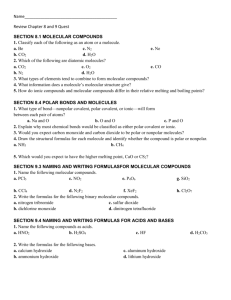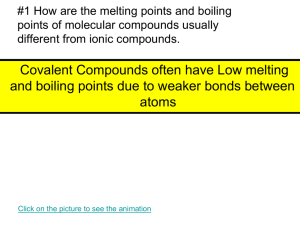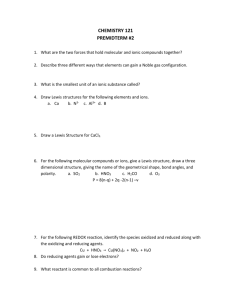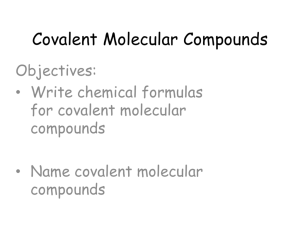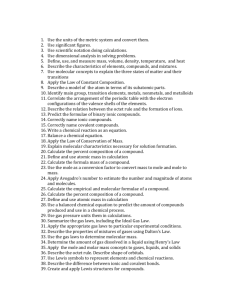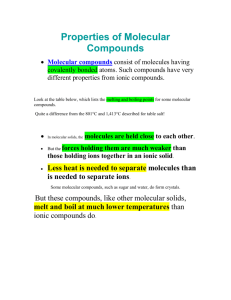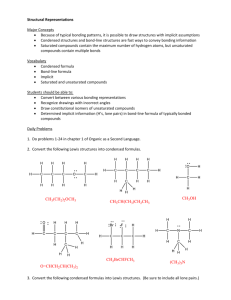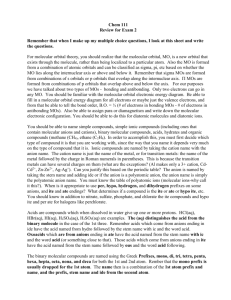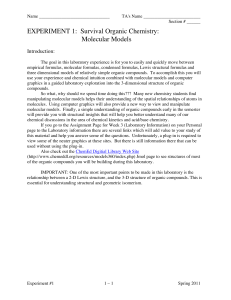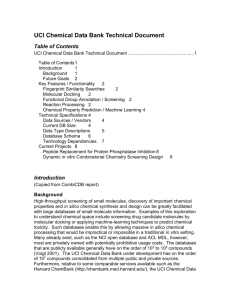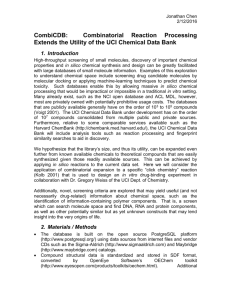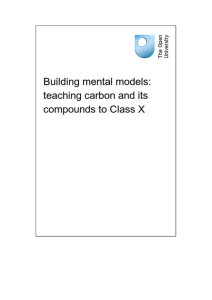Unit 5
advertisement
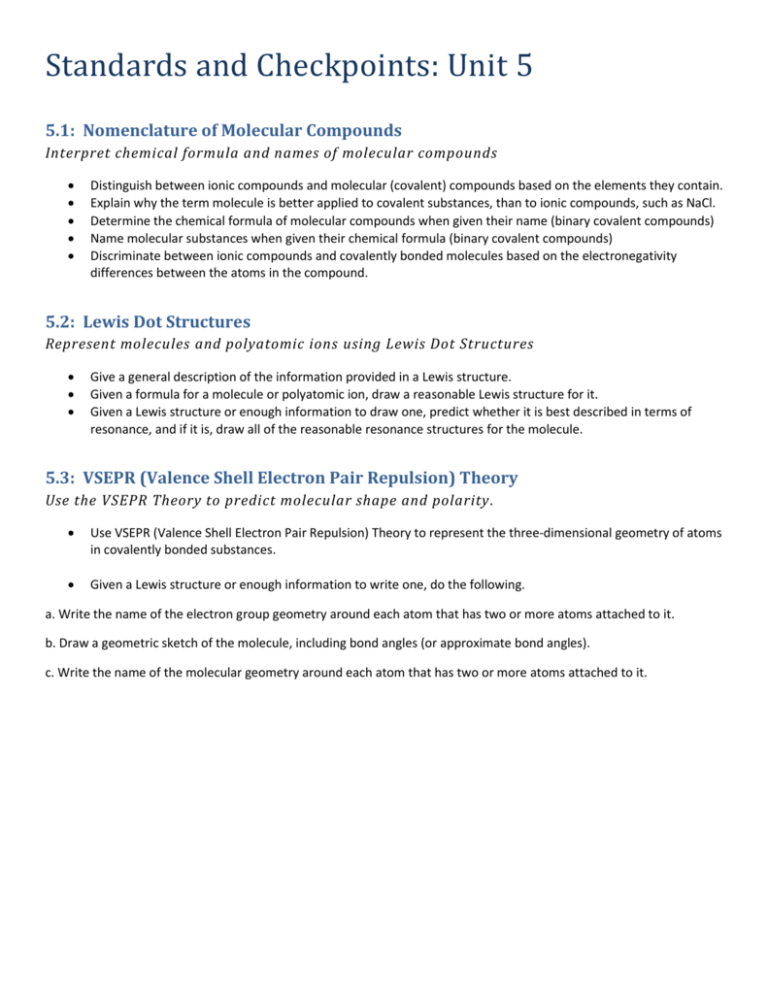
Standards and Checkpoints: Unit 5 5.1: Nomenclature of Molecular Compounds Interpret chemical formula and names of molecular compounds Distinguish between ionic compounds and molecular (covalent) compounds based on the elements they contain. Explain why the term molecule is better applied to covalent substances, than to ionic compounds, such as NaCl. Determine the chemical formula of molecular compounds when given their name (binary covalent compounds) Name molecular substances when given their chemical formula (binary covalent compounds) Discriminate between ionic compounds and covalently bonded molecules based on the electronegativity differences between the atoms in the compound. 5.2: Lewis Dot Structures Represent molecules and polyatomic ions using Lewis Dot Structures Give a general description of the information provided in a Lewis structure. Given a formula for a molecule or polyatomic ion, draw a reasonable Lewis structure for it. Given a Lewis structure or enough information to draw one, predict whether it is best described in terms of resonance, and if it is, draw all of the reasonable resonance structures for the molecule. 5.3: VSEPR (Valence Shell Electron Pair Repulsion) Theory Use the VSEPR Theory to predict molecular shape and polarity . Use VSEPR (Valence Shell Electron Pair Repulsion) Theory to represent the three‐dimensional geometry of atoms in covalently bonded substances. Given a Lewis structure or enough information to write one, do the following. a. Write the name of the electron group geometry around each atom that has two or more atoms attached to it. b. Draw a geometric sketch of the molecule, including bond angles (or approximate bond angles). c. Write the name of the molecular geometry around each atom that has two or more atoms attached to it.



